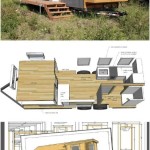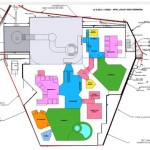Home Fire Escape Plan Template
A home fire escape plan is a critical document outlining procedures for evacuating a residence during a fire. It provides a structured approach to ensure the safety of all household members, including pets, in a potentially chaotic and dangerous situation. This plan should be tailored to the specific layout of the home and the needs of its occupants.
Creating a comprehensive fire escape plan requires careful consideration of several key elements. The first step is to draw a detailed floor plan of the home. This diagram should clearly mark all rooms, windows, doors, hallways, and staircases. Indicate the locations of smoke detectors and fire extinguishers as well. Multiple escape routes should be identified for each room, ideally including a primary exit and a secondary option in case the primary route is blocked.
Once the floor plan is complete, designate a meeting point outside the house. This location should be a safe distance away from the structure and easily identifiable for all family members. A mailbox, a specific tree, or a neighbor's driveway are common choices. This designated meeting point allows everyone to quickly account for each other and inform emergency responders if anyone is missing.
Practicing the escape plan is crucial for ensuring its effectiveness. Regular fire drills, conducted at least twice a year, familiarize household members with the established escape routes and procedures. These drills should be treated seriously, simulating the urgency of a real fire scenario. Different escape routes should be practiced, including using secondary exits.
During a fire drill, emphasize the importance of staying low to the ground to avoid inhaling smoke. Smoke inhalation is a leading cause of fire-related deaths, and staying low reduces exposure to toxic fumes. Practice opening windows and using escape ladders if applicable. Ensure everyone understands how to operate these safety devices quickly and efficiently.
Incorporating specific considerations for individuals with disabilities or mobility limitations is essential. The escape plan should outline designated assistance for these individuals and identify accessible escape routes. Consider installing ramps, widening doorways, or providing other modifications to facilitate their safe evacuation.
Teaching household members how to properly use a fire extinguisher is a valuable addition to the fire escape plan. While evacuating should always be the priority, knowing how to operate a fire extinguisher can be beneficial in containing a small fire before it spreads. However, it's crucial to emphasize that attempting to extinguish a fire should only be done if it is safe to do so and the fire is small and contained.
Regular maintenance of smoke detectors and fire extinguishers is paramount. Testing smoke detectors monthly and replacing batteries annually ensures they are functioning correctly. Fire extinguishers should be inspected regularly to verify they are charged and ready for use. Expired or damaged fire extinguishers should be replaced immediately.
Educating children about fire safety is a critical aspect of the fire escape plan. Teach children what a smoke alarm sounds like and explain the importance of reacting quickly when it activates. Practice “stop, drop, and roll” techniques to extinguish clothing fires. Emphasize the importance of never hiding during a fire and always following the established escape plan.
Store important documents, such as insurance policies, birth certificates, and medical records, in a fireproof safe or container. This protects these vital documents from fire damage and ensures they are readily accessible after an emergency.
Consider installing fire safety devices such as fire sprinklers and interconnected smoke alarms. Fire sprinklers can significantly reduce fire damage and increase the chances of survival. Interconnected smoke alarms ensure that all alarms in the house sound if one detects smoke, providing early warning to all occupants.
Post the fire escape plan in a visible location, such as on the refrigerator or inside a kitchen cabinet. This ensures easy access for all household members and serves as a constant reminder of the established procedures. Regularly review and update the plan as needed, especially if there are changes to the household or the home’s layout.
Contacting the local fire department can provide additional resources and guidance for developing a comprehensive fire escape plan. They can offer valuable advice specific to the community and the potential fire hazards in the area. They may also offer home safety inspections to identify potential risks and recommend preventative measures.
Developing and implementing a home fire escape plan is a proactive measure that significantly enhances the safety of all household members. By following these guidelines and practicing regularly, families can be better prepared and increase their chances of survival in the event of a fire.

Fire Escape Plans Ontario Association Of Chiefs

Fire Safety Home Escape Plan Child Hub

How To Create A Fire Evacuation Plan Travelers Insurance

Home Escape Planning City Of Richmond Hill

Fire Escape Plan Templates For Printing Maker

Preventing A Fire In The Home Department Of And Emergency Services

Home Escape Plan Township Of Scugog
Lieut Moe S E D I T H Plan City Of Yonkers Ny

Gaithersburg Grove Volunteer Fire Department

Fire Escape Plan Mathews Volunteer Department








